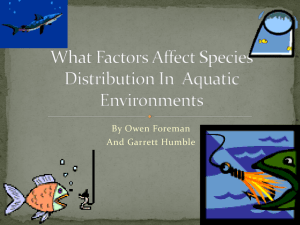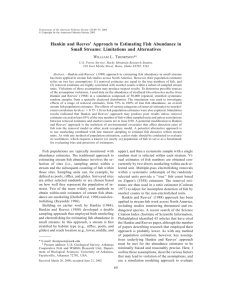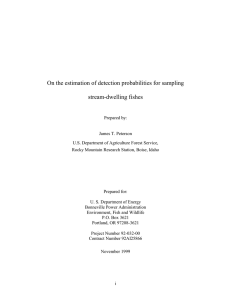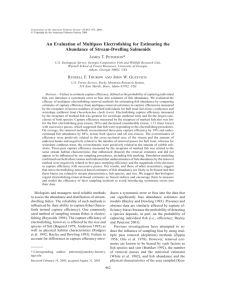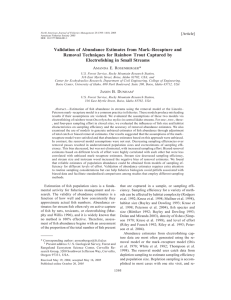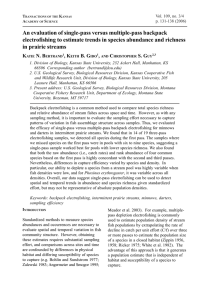Science
advertisement
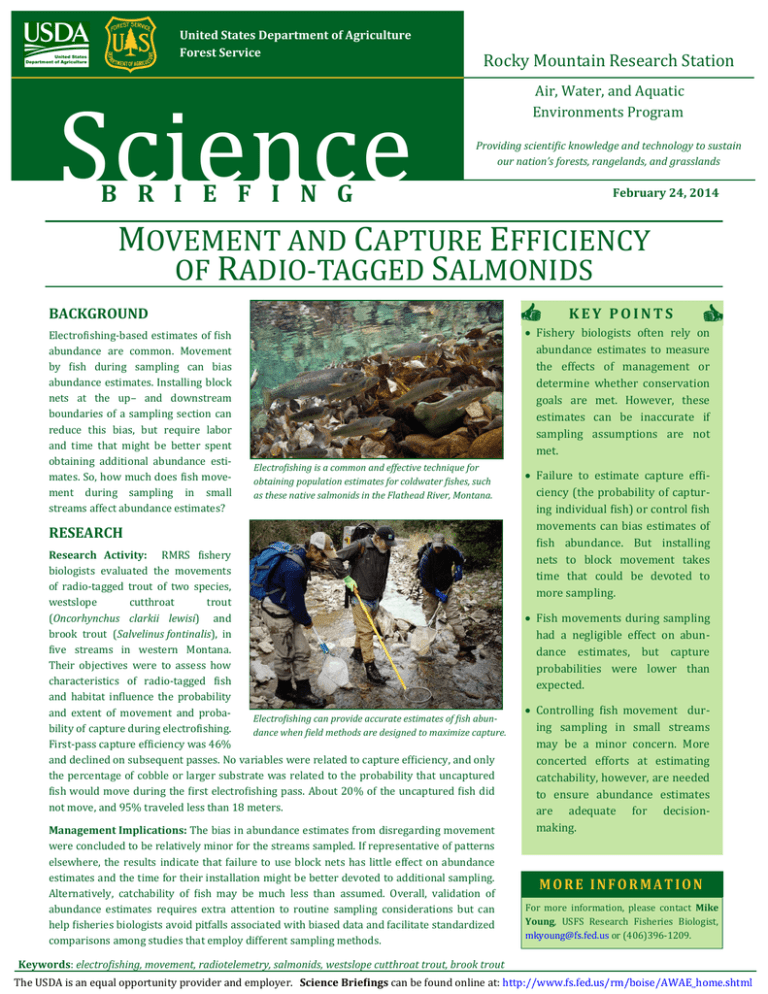
United States Department of Agriculture Forest Service Science Rocky Mountain Research Station Air, Water, and Aquatic Environments Program Providing scientific knowledge and technology to sustain our nation’s forests, rangelands, and grasslands B R I E F I N G February 24, 2014 MOVEMENT AND CAPTURE EFFICIENCY OF RADIO-TAGGED SALMONIDS BACKGROUND Electrofishing-based estimates of fish abundance are common. Movement by fish during sampling can bias abundance estimates. Installing block nets at the up– and downstream boundaries of a sampling section can reduce this bias, but require labor and time that might be better spent obtaining additional abundance estimates. So, how much does fish movement during sampling in small streams affect abundance estimates? KEY POINTS Fishery biologists often rely on abundance estimates to measure the effects of management or determine whether conservation goals are met. However, these estimates can be inaccurate if sampling assumptions are not met. Electrofishing is a common and effective technique for obtaining population estimates for coldwater fishes, such as these native salmonids in the Flathead River, Montana. RESEARCH Research Activity: RMRS fishery biologists evaluated the movements of radio-tagged trout of two species, westslope cutthroat trout (Oncorhynchus clarkii lewisi) and brook trout (Salvelinus fontinalis), in five streams in western Montana. Their objectives were to assess how characteristics of radio-tagged fish and habitat influence the probability and extent of movement and probaElectrofishing can provide accurate estimates of fish abunbility of capture during electrofishing. dance when field methods are designed to maximize capture. First-pass capture efficiency was 46% and declined on subsequent passes. No variables were related to capture efficiency, and only the percentage of cobble or larger substrate was related to the probability that uncaptured fish would move during the first electrofishing pass. About 20% of the uncaptured fish did not move, and 95% traveled less than 18 meters. Management Implications: The bias in abundance estimates from disregarding movement were concluded to be relatively minor for the streams sampled. If representative of patterns elsewhere, the results indicate that failure to use block nets has little effect on abundance estimates and the time for their installation might be better devoted to additional sampling. Alternatively, catchability of fish may be much less than assumed. Overall, validation of abundance estimates requires extra attention to routine sampling considerations but can help fisheries biologists avoid pitfalls associated with biased data and facilitate standardized comparisons among studies that employ different sampling methods. Failure to estimate capture efficiency (the probability of capturing individual fish) or control fish movements can bias estimates of fish abundance. But installing nets to block movement takes time that could be devoted to more sampling. Fish movements during sampling had a negligible effect on abundance estimates, but capture probabilities were lower than expected. Controlling fish movement during sampling in small streams may be a minor concern. More concerted efforts at estimating catchability, however, are needed to ensure abundance estimates are adequate for decisionmaking. MORE INFORMATION For more information, please contact Mike Young, USFS Research Fisheries Biologist, mkyoung@fs.fed.us or (406)396-1209. Keywords: electrofishing, movement, radiotelemetry, salmonids, westslope cutthroat trout, brook trout The USDA is an equal opportunity provider and employer. Science Briefings can be found online at: http://www.fs.fed.us/rm/boise/AWAE_home.shtml

